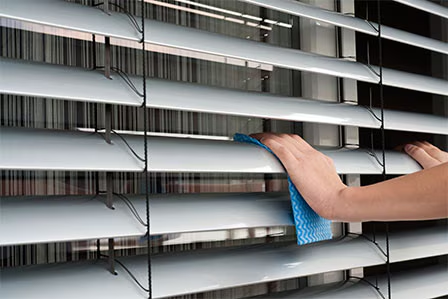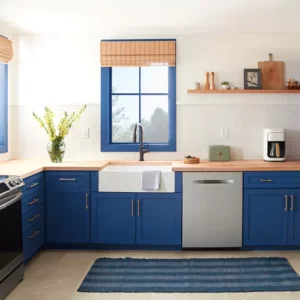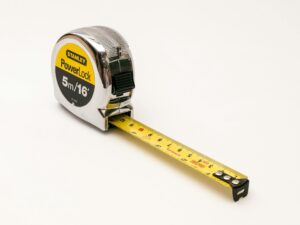4 Tips to Clean Your Blinds: Cleaning your blinds once a month will help keep the dust down in your home especially in the spring and fall. Blinds that are well taken care of should last for decades (even though most only have a warranty of five years).

1. Venetian Options
- Use the brush attachment on your vacuum cleaner and adjust the blinds to expose the flat surface. Then, from top to bottom and left to right, vacuum the entire surface. Reverse the slats and repeat.
- Use a lamb’s wool duster to clean the slats.
- Run an old paintbrush along each slat.
- Saturate a cloth with methylated spirits and wrap it around a rubber spatula, then stick it between the open slats to dust.
- Wear an old pair of thick, absorbent cloth gloves and wipe the slats one by one with your gloved hands.
- Washing Aluminum and Vinyl Venetian blinds is fine, but don’t use harsh cleaners or abrasives on them.
- Don’t use any cleaner with ammonia on aluminum, because it will damage the finish. To clean aluminum or vinyl blinds, either wash them where they hang, or treat them to a quick trip to the shower or bathtub.
2. Dust Regularly
- To keep other sorts of blinds from looking shady, dust them each week with one of those ticklish feather dusters or the soft brush attachment on your vacuum cleaner.
- A microfibre dusting cloth works wonders on blinds of all types. Once a week, lightly run the dusting cloth, which typically has more than 45,000 fibres per square centimetre, over the front and back of your blinds to keep all those dust particles from multiplying
3. Wash ‘n dry
- Many fabric blinds can be washed carefully and dried.
- Take a close look at the care instructions for your blinds before attempting the following method: Take down the blind and immerse it for no more than a minute in a bathtub full of warm water to which you’ve added 50 ml (1/4 cup) of mild dishwashing liquid. Use a soft brush to scrub both sides. Rinse with fresh water and hang to air dry.
- If you have vinyl blinds, wash them twice a year with a sponge or soft cloth, using a solution of 50 ml (1/4 cup) of white vinegar and 1 litre (1 quart) of warm water.
4. If they can’t be washed
- Scour non-washable blinds with polenta or flour, applied with a flannel rag.
- Or use an art gum or other soft pencil rubber to remove spots and stains.
- Alternatively, you could have them professionally dry-cleaned.
- Blinds made of natural materials can be damaged by water. Parchment, paper or rice paper should not get wet at all. Clean them as you would non-washable wallpaper — with commercial cleaning putty or an art gum pencil rubber.
- Or find a spot remover that claims to work on the material at hand and test it on an inconspicuous area first.
- Keep parchment blinds clean by applying a thin coat of paste wax (the same thing you’d use on wooden floors), buffing to a shine with a soft cloth.
- If a blind gets a small tear, seal it with clear nail polish. This also works with vinyl-backed blinds.
Extra Tips and Tricks
Shutters
You can clean Shutters with the exact process outlined above for blinds.
No microfiber cloth? No problem
Cloths are great, but an old fluffy sock will work just as well to clean your blinds. Put the sock over your hand, (dip it into water for removing hard dirt or stains), and you’ll be able to clean all the window coverings in your house.
Clean Your Blinds Regularly
Clean your blinds once a month and the dust will never get too bad. Blinds that are well taken care of should last for decades (even though most only have a warranty of five years).
Fabric Shades
Fabric shades, such as Roman or Honeycomb Shades can be cleaned at home as well (but the process is a little different). Lower the shades and use the soft vacuum brush attachment and the low suction setting on your vacuum cleaner to go over the shades starting from the top and working your way down.
When you’re done with one side, maneuver behind the fabric shade and vacuum the other side. Vacuum the back of the fabric shade as well.








